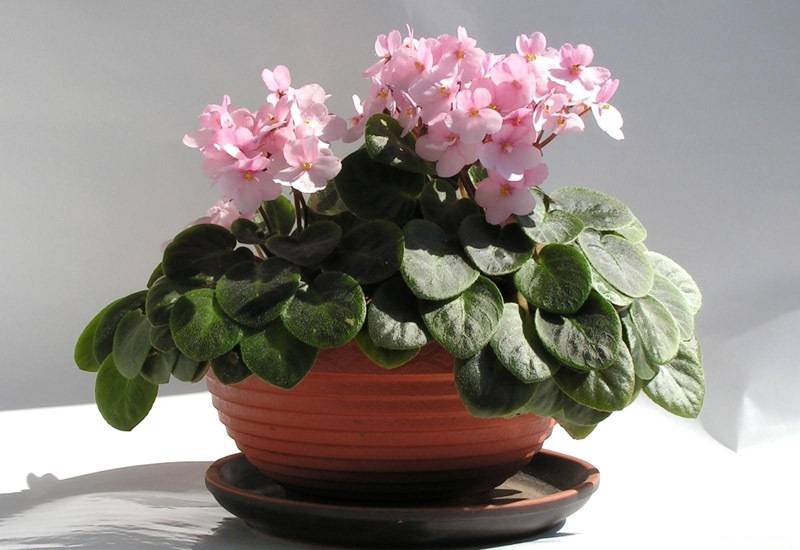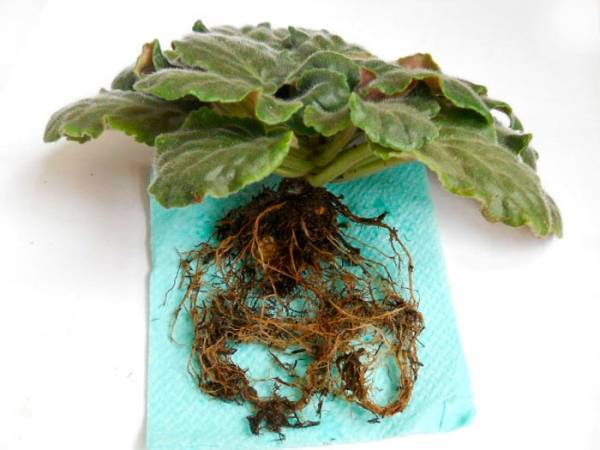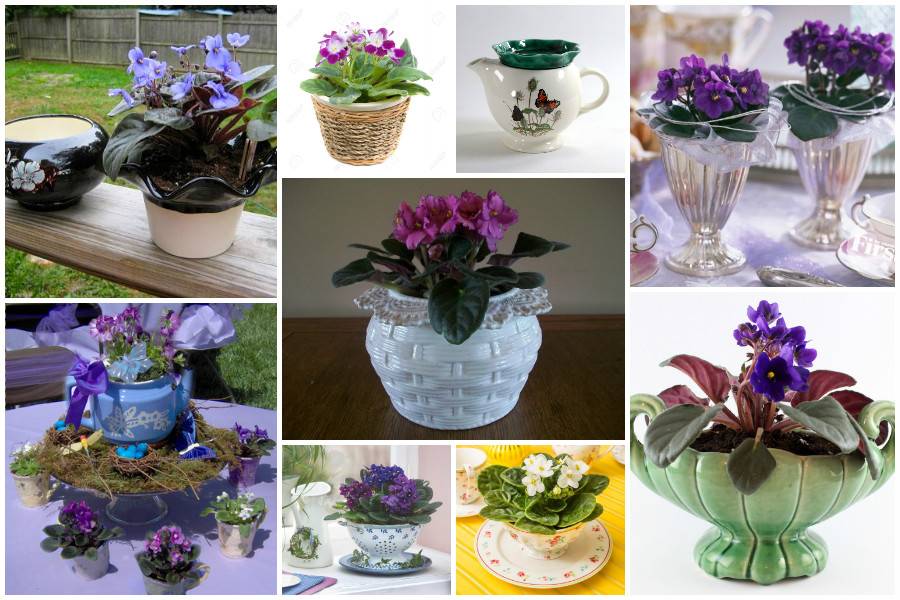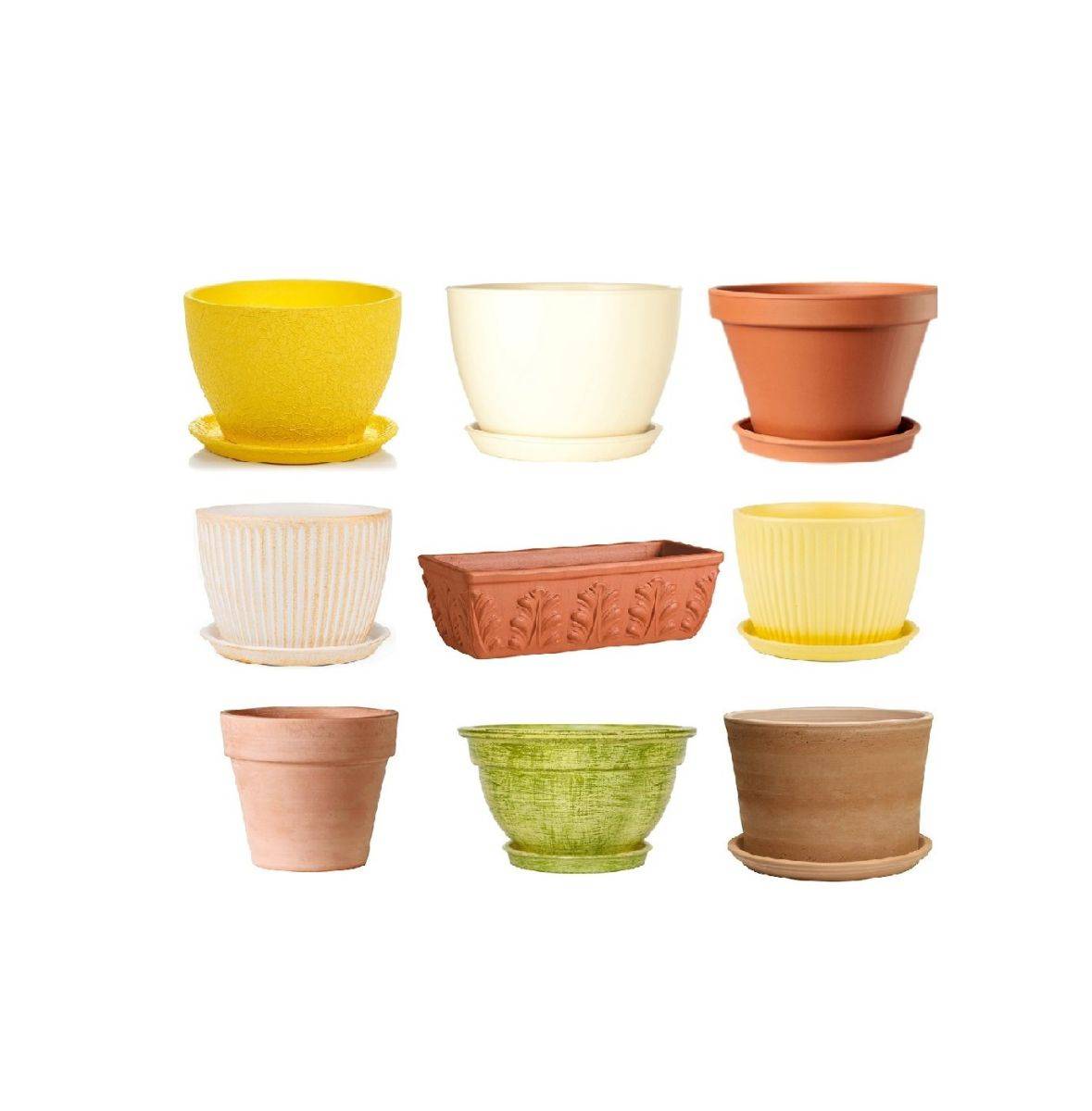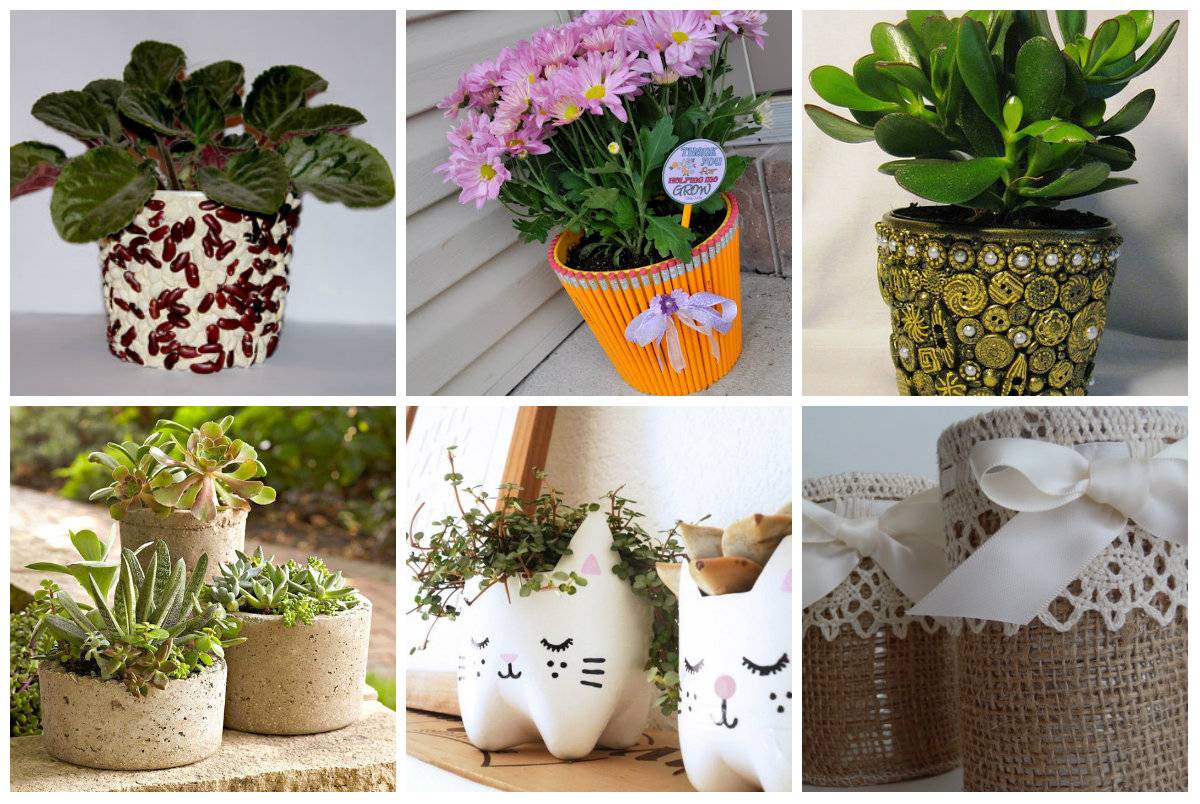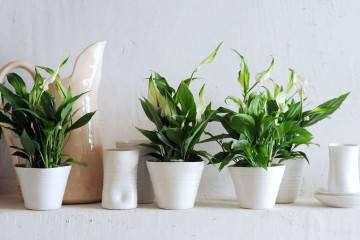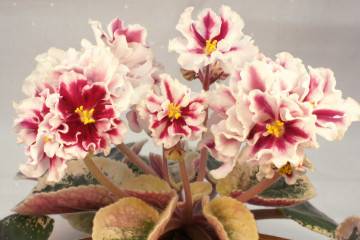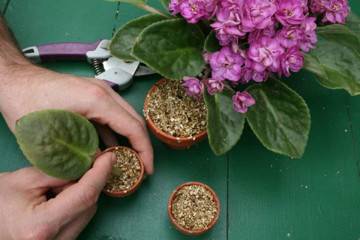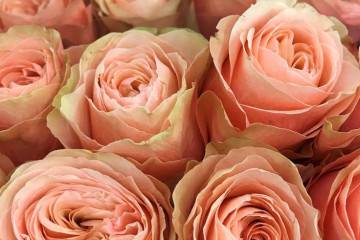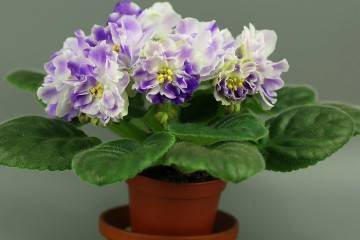Violet pots - looking for the perfect option
Content:
Violet is the most delicate and beloved home flower that can add coziness to the interior. And thanks to its various colors and shapes, it can satisfy any tastes of admirers of blooming indoor flowers. But there are some nuances in caring for a violet that you should know about in advance. And it's worth starting by choosing a pot for her.
Features of the root system of violets
The root system of violets is quite thin and delicate. Its peculiarity lies in the fact that the direction of development does not go down, but in the overwhelming majority of cases spreads in the upper layer of the soil. It is for this reason that it is necessary to create specific conditions for the plant, choosing pots that correspond to the shape of the saucer-like arrangement of the roots.
Root system dimensions
Each stage of a flower's life cycle corresponds not only to its own rosette diameter, but also to the dimensions of the root system. So, it must be borne in mind that:
- in a young plant, whose age is up to 1 year, the root system does not exceed 8 cm in diameter;
- in a more adult state, it reaches 13 cm;
- only in some varieties and very large specimens it can reach all 16 cm;
- there are also mini varieties. For them, you need to choose the pots corresponding to their dimensions. Most often this is a mini container, the diameter of which is 5-7 cm.
Varieties of pots
When choosing pots for violets, you need to take into account that you will have to transplant the flower several times. This is an important point in flower care that cannot be ignored. If you plant a young flower in a pot that is too large, then it can simply rot and disappear. Therefore, you will have to buy flowerpots several times. In addition, it should be noted that violet pots will have to be classified, both in size and material.
The size
By size, it is necessary to evaluate not only the diameter of the pot, but also its height.
A low pot in the form of a bowl is best suited for violets. Its proportions should be approximately in the following ratios - 2: 1 or 2.5: 1. That is, the diameter should be 2 or 2.5 times the height of the pot.
Inexperienced breeders of Saintpaulias (as these indoor plants are also called) often have a question about what size of a pot is needed for a violet. As for the diameters, then:
- for children, take products up to 5 cm in diameter. The same pots are needed for mini violets;
- for a flower before and after 1 flowering, those that are 10 cm in diameter are suitable;
- for adult standard and ampelous varieties, a diameter of 12 cm is suitable;
- for giant varieties and large overgrown bushes, you can take a diameter of up to 15-16 cm, but no more.
Material
On stores, depending on the material, there are pots of the following types:
- clay. They pass water and air well enough, therefore, do not allow the root system to experience discomfort. But pots are not suitable for violets;
- ceramic. This is still the same clay, but fired with the application of glaze. Such products have a more attractive appearance and colors provide proper conditions of detention. Although, in comparison with the previous ones, they do not allow the soil in the pot to be intensively saturated with oxygen. In addition, the root system can grow to them during growth, which contributes to greater injury to the plant during transshipment;
- plastic products. They are inexpensive and have a wide range of colors, shapes and sizes. The quality and smoothness of the surface does not allow the root system to grow to the walls, which facilitates the process of transplanting violets. Of the shortcomings of plastic products, low aesthetics are noted.
Price
The price of a pot primarily depends on how well it is made, what materials were used for this and how much it differs from standard stamped ones. That is, the design component also plays an important role.
The only exceptions to this are ampel varieties. Therefore, when choosing a container for planting a plant, you need to take into account the shape of the flower that will be formed, since a rough product can significantly reduce the aesthetics of the flower itself.
Designer pots
Florists often prefer to choose designer pots. Basically, these are those who follow their interior and try to give the room an original style. But do not be too zealous here with the original forms, since the violet is quite sensitive to the selection of containers. Therefore, if there is a desire to buy a non-standard handmade pot, it is better to focus on the original colors and methods of decorating the outer surface.
Specialized
In addition to the above options, there are also specialized pots. Most often they are presented in the form of a technotar with a large number of holes at the bottom of the product. But this option is only suitable for temporary use.
Which pot is best for a particular flower
For young plants, it is better to choose plastic products. This is due to the fact that such violet pots will be more comfortable for the root system. It is convenient to transfer flowers from them without damaging the thin roots. And when the plant reaches an adult state, then it can be planted already for permanent growth in those products that seem to be the most optimal from the point of view of aesthetic perception.
What calculations need to be operated when choosing
Before deciding which pots are needed for violets at a certain stage of their growth, you need to measure the diameter of the rosette:
- when the leaf surface reaches a diameter of 6 cm, choose a pot from 3 to 5 cm;
- with a socket diameter of 6 to 15 cm, the container diameter should be 5 cm;
- rosette diameter from 15 to 20 cm - a pot 6 cm in diameter;
- foliage from 20 to 40 cm - pot 8-9 cm;
- for large varieties over 40 cm, pots are selected over 10 cm in diameter.
When planting young plants
When planting young plants, it is necessary to reload about 2-3 times. Only in this case will the plant be properly cared for. Therefore, it is worth paying attention to which pots to plant violets in at each stage, and carefully measure the diameter of the rosette of the growing flower.
When replanting old
When the flower reaches an impressive size, it must be repotted periodically. This is done to:
- remove young children that will prevent the bush from developing normally;
- update the soil to provide the indoor flower with everything you need;
- since the bush during transplantation can significantly decrease (due to breaking off the side children), it is necessary to carefully evaluate the diameter of the rosette each time in order to choose the correct size of the pot.
With different types of watering
When choosing pots for violets and evaluating what products should be, it is necessary to take into account a different irrigation system. If you plan to add water directly to the soil, then a regular pot with a small tray corresponding to the diameter of the bottom of the product will do.
If watering will be carried out into the pallet, you should take a closer look at those that are structurally made with a larger substrate. This is the only way to pour the required amount of water into it.
How to make a pot with your own hands at home
If you wish, you can make the pot yourself. Most often, gypsum, clay, polymers or cement are used for this. There is no need to worry about the product being uneven.
If there is material from which you can weave a pot (most often it is straw or a rope), then you can simply braid the finished product with them.
Available materials
The easiest way is to buy polymeric materials. This is due to the fact that they do not need to be additionally thermally treated. And if such manipulation is required, then it can be done at temperature indicators that can be obtained in an ordinary oven. Working with clay requires firing. Otherwise, the surface will quickly crumble under the influence of moisture and mechanical stress.
List of components
To create a plastic pot you will need:
- polymer;
- glaze;
- water;
- paints and brushes;
- oven. It is enough to set it to 100 ° C, and the product will receive the required rigidity.
Can the pot be reused
Violet pots can be reused, but certain precautions must be taken to protect new plantings from possible infection.
How to clean
You can clean with baking soda or any detergent that is used in the kitchen for dishes. Do not use aggressive chemistry, as it can be absorbed into the surface of the material, and then negatively affect the composition of the soil.
Some types of products that can withstand heat treatment are additionally boiled or at least poured over with boiling water. This manipulation can be replaced by calcining in an oven at a temperature not lower than 200 ° C for 20 minutes.
How to fix
Only ceramic or clay items can be repaired. For this, it is better to use a polymer material diluted to a more liquid state and fix it on it. The fact is that the use of various adhesives can have a negative effect on the flower as well as the use of chemicals when cleaning.
Using all the above recommendations for caring for a room violet, you can achieve high decorative qualities of the plant and an attractive appearance. And the pot, as you can see from the article, plays an important role in this.
